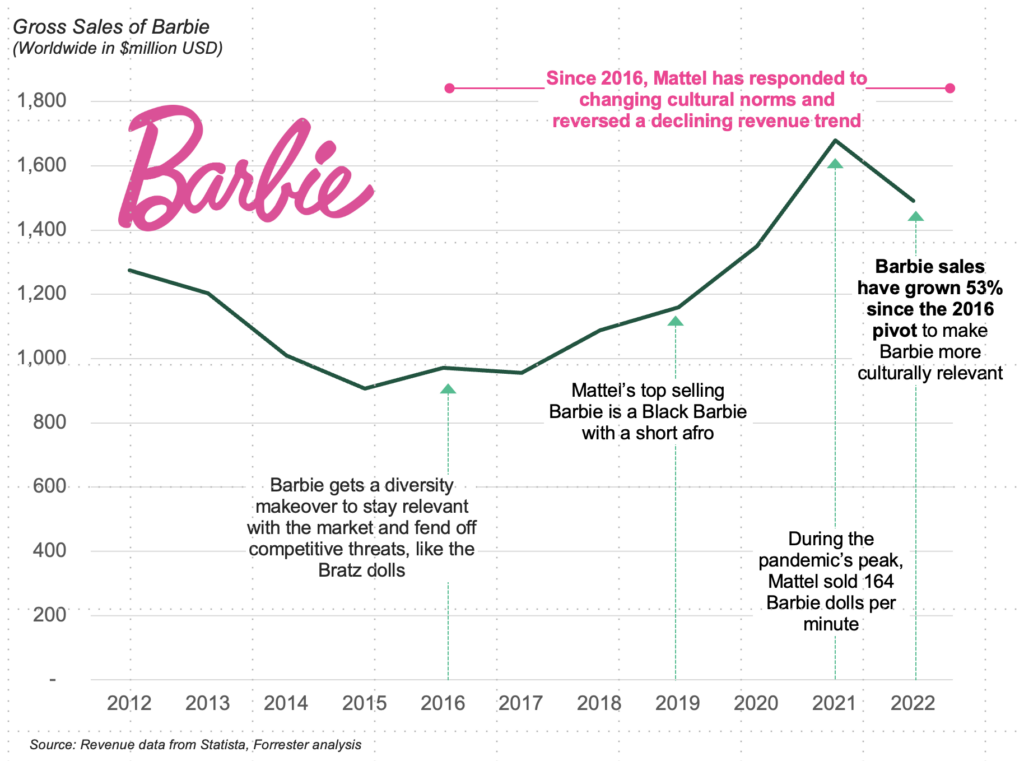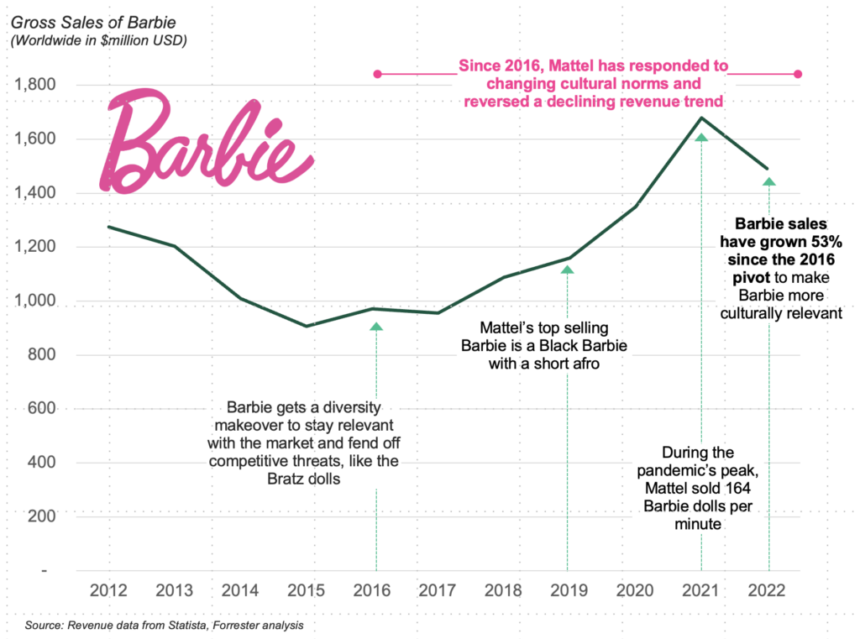The much-anticipated Barbie movie releasing on July 21 comes with a bold promise – it’s for those who love Barbie as much as it is for those who hate her. So, no matter which camp you’re in, when the lights dim and Margot Robbie appears in a flash of brilliant pink, realize that what you’re watching is much more than a movie. It’s a slice of American, nay, global culture viewed through the lens of one of the most successful toy brands ever.
Here’s what you should know about Barbie’s evolution before you head to the movies:
A Sordid Past, A Diverse Present
If you’ve ever wondered why Barbie looks the way she does, it’s because Ruth Handler, her creator, was inspired by a German comic-strip character of a call girl turned adult toy (I’m sorry if I’ve just ruined your entire childhood). The next sixty years have seen far less salacious incarnations like CEO and surgeon, as Barbie became a model for young girls. By 2009, 9 out of 10 American girls owned a Barbie, and the average girl had 8. It’s this capacity to evolve that kept Barbie culturally relevant.
Evolution Creates Financial Value For Brands
For a brand to sustain value over an extended period, it must continually morph in tandem with society. Barbie was introduced during the thick of the Civil Rights movement and has gone through innumerable iterations to keep the doll culturally relevant and in sync with what social scientists call the collective conscience of society. And doing so has economic value. Mattel’s pivot in 2016 to double down on diverse Barbies was instrumental in turning around a downward revenue trend.

Beliefs About Gender Affect Attitudes Towards Toys
Barbie has always been mired in conversations about gender stereotypes, and the likes of Astronaut Barbie (1965) marketed side-by-side with “don’t eat!“ Slumber Party Barbie (1965) and “math class is tough” Teen Talk Barbie (1992, recalled shortly after) evince the murkiness of the brand’s positioning. Gendered toys continue to be a polarizing topic. Our new research finds that consumers’ belief about gender stereotyping of toys is divided – according to Forrester’s June 2023 Consumer Pulse Survey of 538 US online adults, 49% believe that boys and girls prefer different types of toys because of their gender. Only 36% believe that companies should sell less gender-specific toys. Men, more than women, think that children like toys “suitable” for their gender, and boys, more than girls, feel the weight of this expectation more.
Our Research On Long-Term Cultural Relevance
Gender is one of the tectonic forces shaping culture and, in turn, people’s relationships with brands and their products. We’ve previously written about the effect of gender evolution on go-to-market strategies and the impetus for ensuring gender (and racial) fairness and equity. Look out for upcoming research based on new quantitative and quantitative analyses on these topics.
In the meantime, if you want to learn more about these topics, follow my research on Forrester and request a guidance session with me.








